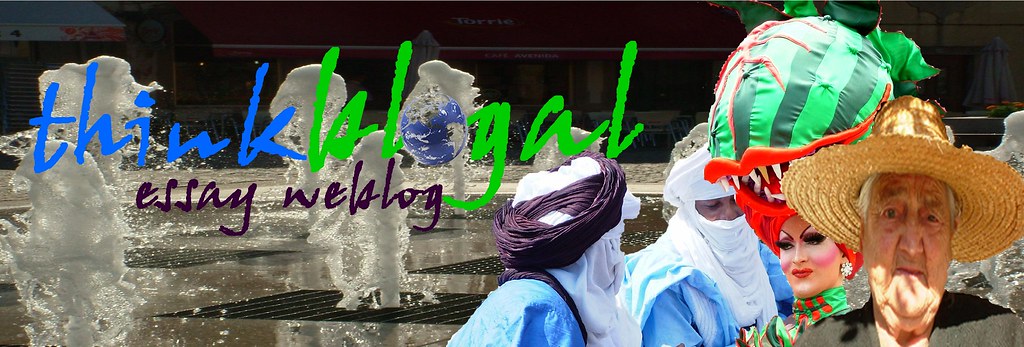Of Cultural Globalization and Uniqueness by Pedro F Marcelino
Mindelo, in the tiny Republic of Cape Verde, can.
The small archipelago located about 400 miles west of the Senegalese coast was only discovered in 1420, by Genovese navigator António di Noli, serving the Portuguese Crown. The first settlement took place in Vila da Ribeira Grande that was to become the earliest European colonial capital in Africa, and one of some importance. For centuries, the town develops and grows in number of inhabitants, prospering as a slave-trade hub, until the Crown decides that slaves are to be taken directly from the Guinean Coast. This marks the decline of what is nowadays known as Cidade Velha (Old Town), a UNESCO World Heritage site.
Without the profits of slavery, pestered by years of droughts and attacked by English, French and Dutch pirates, the islands decline steeply, and an early Capeverdian emigration process takes place. If in a first moment the islands (mostly Santiago, where the capital was located) were exposed to African influences, and those of Brazil and Europe, everything would change in a second moment. Emigration, albeit the fact that Cape Verde was a mere colony, gave the native people – by then, already mostly mulatto or creole – a chance to contribute with different inputs. Constituted mostly by free citizens, many sailed to North and South America, others to Europe, and a big number of them would actually return, along bringing cultural influences that slowly started to change the islands.
In the 19th century, Capeverdian, along with Azorean men, were said to be the strongest, sturdiest and most reliable hands on whalers. Boston, Cape Cod and other communities in New England quickly become one of the major reference points for the islanders, now in the center of a cross that that region with Lisbon, Dakar and Rio de Janeiro. Growing in each generation, the numbers of Capeverdians in America reached a ceiling of an estimated 300.000 in our days.
The same century, however, would bring something more to the islands: the English. Having been colonized mostly by Azorean and southern Portuguese from the mainland, as well as West African and Bantu slaves, the islands had seen only a residual number of European from other origins. When the English Crown forces the Portuguese to allow a coal supply outpost in the deserted island of São Vicente, a major step in the europeization of Cape Verde is given. Over the following two centuries, the harbour would grow to become the city of Mindelo, famed for its warm weather, warm girls and warm music. As a major port, Mindelo attracted Capeverdians from all other islands, with their different habits and ethnic origins, but attracted also sailors from all over Europe. Most influential were the Portuguese and English settlers, but also Brazil started to leave a mark in the islands.
These multiple inputs are visible today in the local vocabulary, that includes many English, French, and Brazilian words, and even in the accent, from a certain fashion of imitation of English mispronunciations. But it is mostly visible in music. Mindelo developed as a posher, more cosmopolitan city than most of the colony, and very early was awarded the first high school in the islands. Its existence would prompt the formation of a well-educated population, whose critic mass would eventually lead to the modernist movement of Claridade (Clarity). The claridosos, as they were known, were painters, writers, poets, bards, and enjoyed the sophistication of knowledge coming from four different continents to rest in their city. The height of the movement took place in the 1920s-30s, in par with the early fascist dictatorship of the colonial metropolis (Estado Novo, or “New State”). Many of the local intellectuals would spend years in political imprisionement, but the change of times could not be prevented. Amílcar Cabral, the independence leader, was born to politics out of Mindelo’s High school and Lisbon’s Technical University, and would unite Cape Verde and Guinea Bissau in a war to achieve freedom. He died before that objective could be reached, in 1975, after the fall of Salazar and his fascist regime.
Throughout the 20th century, despite all the economic and intellectual boom, the bulk of the population, particularly rural inhabitants, was left with little or nothing to live on, facing drought after drought. Again, the only resource was emigration, that scattered Capeverdians all over Europe (mostly Italy, Holland, France and Portugal), USA and Brazil. Along with the high numbers of forced deportations to Angola and São Tomé, the amount of Capeverdians living abroad would quickly double the amount of those staying home.
The eternal dilemma of the islands echoes in its music and poetry in the form of a popular sentence: wanting to leave but having to stay, wanting to stay but having to leave. It marks the true uniqueness of a country that, albeit having one of the highest human development indexes in Africa, has few resources to match.
Walking the streets of Mindelo, one perceives both the cosmopolitan past, and the scarce African influences (that the island received in a limited way, given its late colonization), both the cultured atmosphere and the near desperate poverty of those who had no chance for an education. It does not feel like Africa. It feels like Cape Verde.












